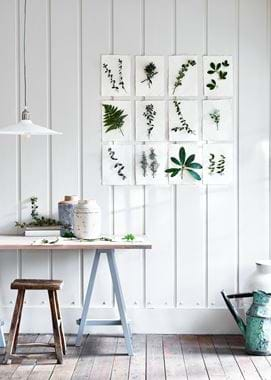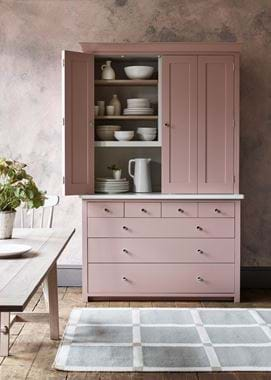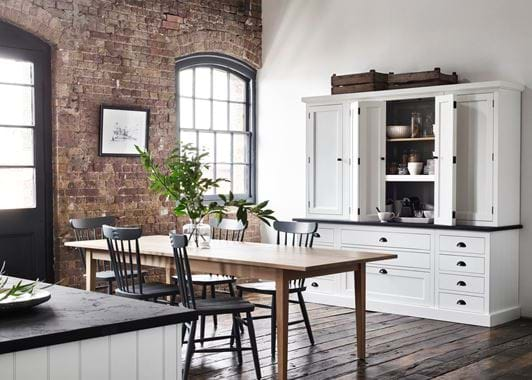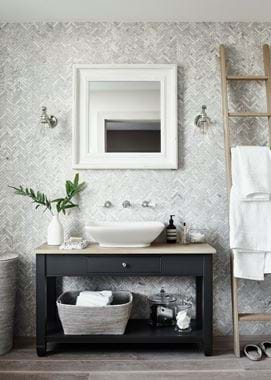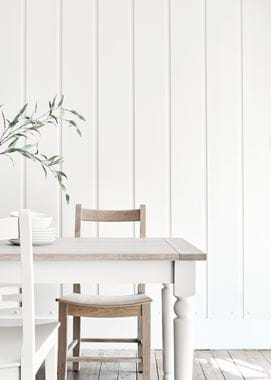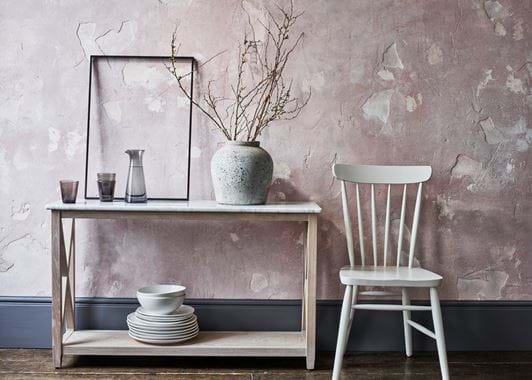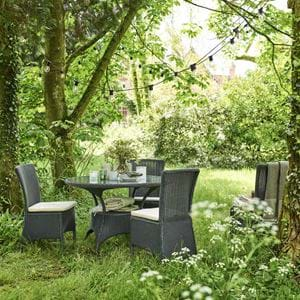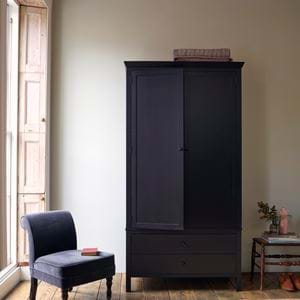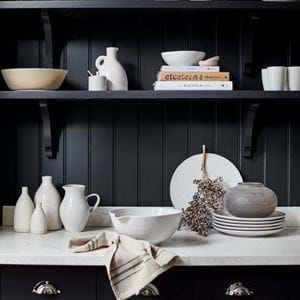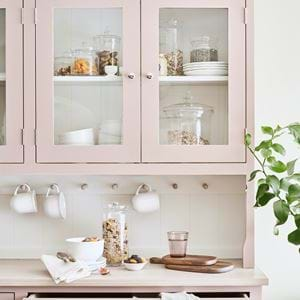How to: combine painted and brown furniture
How to: combine painted and brown furniture
It’s true that when defining your room’s colour palette, thought tends to begin with what colour to paint the walls. But there are other elements in the room that’ll help to shape your theme, either bringing consistency or a few points of contrast, such as the hues in any fabrics or the tone of your accessories. Furniture is another. But how do you combine painted designs with antique brown furniture or exposed timber pieces in a cohesive, considered way?
Treat timber as a colour, not just a material
Colour palettes perform best when there’s enough difference to create interest and variation (one or two colours alone isn’t really enough), but equally not so many colours that there’s no cohesion or clarity (any more than four key shades and your scheme will start to lose focus).
By thinking of timber as one of your room’s core colours, it adds a level of rigour, because you’ll be less tempted to bring in yet another tone to the room. You’ll approach your decorating decisions by considering if all of your colours complement one another – timber included.
In the first scheme pictured, Flax Blue, Salt and brown timber (in different tones) create the palette. The painted base of the Hebden trestle table introduces the room’s second colour, while the timber tabletop, floorboards and stool introduce the third and final colour. In the second scene, Old Rose on the dresser and textured plaster wall, oak on the floor and table, and touches of white on the painted Wardley chairs that combine with grey in the Burford rug form a considered palette of four. And in the third Henley kitchen scene, monochrome alone would fall too flat, but by using wood as the third accent colour – whose brown base informed the choice of an exposed brick wall – it binds the three colours.
Paint your furniture to match the walls
If you like the idea of painted furniture, but want it to be a subtler feature in your room, you can paint it in the same colour as the wall it’ll rest against. It helps it to melt into the backdrop, and as a result, helps to make your room feel larger. If the Old Rose Suffolk dresser pictured wasn’t matching the wall colour and was painted in crisp Salt or deep Charcoal, it would stand out far greater. Similarly, in the bathroom pictured, painting the Chichester washstand in a dark tone means it’s far more pronounced in the room than if we’d painted it in barely-there Shingle, which would’ve blended it into the marble Kennet tiles.
Use wooden floorboards as an anchor
In rooms where most of the furniture is painted and storage pieces take basket or painted shelf form, it can feel like wooden furniture would stick out and feel out of place. This is where wooden flooring can help to ground your scheme and let timber’s presence be felt loud and clear. Looking back at the Chichester bathroom, the timber Buckingham mirror is painted, as is the Chichester washstand, the walls are in dappled white and grey marble, and the reed on the Ashcroft baskets is chalky. The whole scheme pivots around tones of white and grey, and so introducing the oak Stratton ladder could easily have felt off-kilter. But remember that your floor and your ceiling are like walls to be decorated, which is why the wooden floorboards bring timber into the room’s palette in a much bigger way, helping the element of wooden furniture to sit happily next to the painted pieces.
Highlight the subtler details
Whether your furniture is painted or timber, look at the smaller details on it and use those to integrate it with the rest of your room’s palette. Our Henley kitchen in Snow is a good example of how this is done. In this scene, the colours are white, black and timber brown. To pick up on the black tones of the cup handle hardware and hinges, the Wardley chairs that surround the oak table are painted in a dark grey. It’s a trick that helps your palette to interlace around the room and to connect pieces of furniture to one another. The same approach is seen in the final image with the Herston console table. This oak design is fused with the Wardley chair to its side by colouring it in Shingle – a tone that corresponds to the Carrara marble tabletop. It’s these smaller details that can create a bond between timber and painted pieces.
Mix painted and wooden finishes in the same piece
And another way to bind timber and painted pieces is to use both finishes in the one design. A painted dresser with an oak self or surface means that an oak table elsewhere in the room feels more fitting. A painted bedside table with an oak tabletop to the side of an oak bed frame feels meant to be. And a painted dining table with an oak top, like our Suffolk table pictured, helps any oak dining chairs that you dot around it feel perfectly at home.
If you’re still feeling a little overwhelmed about decorating your home and combining painted and timber pieces, our in-store home designers are on hand to help. You can find out more here.

